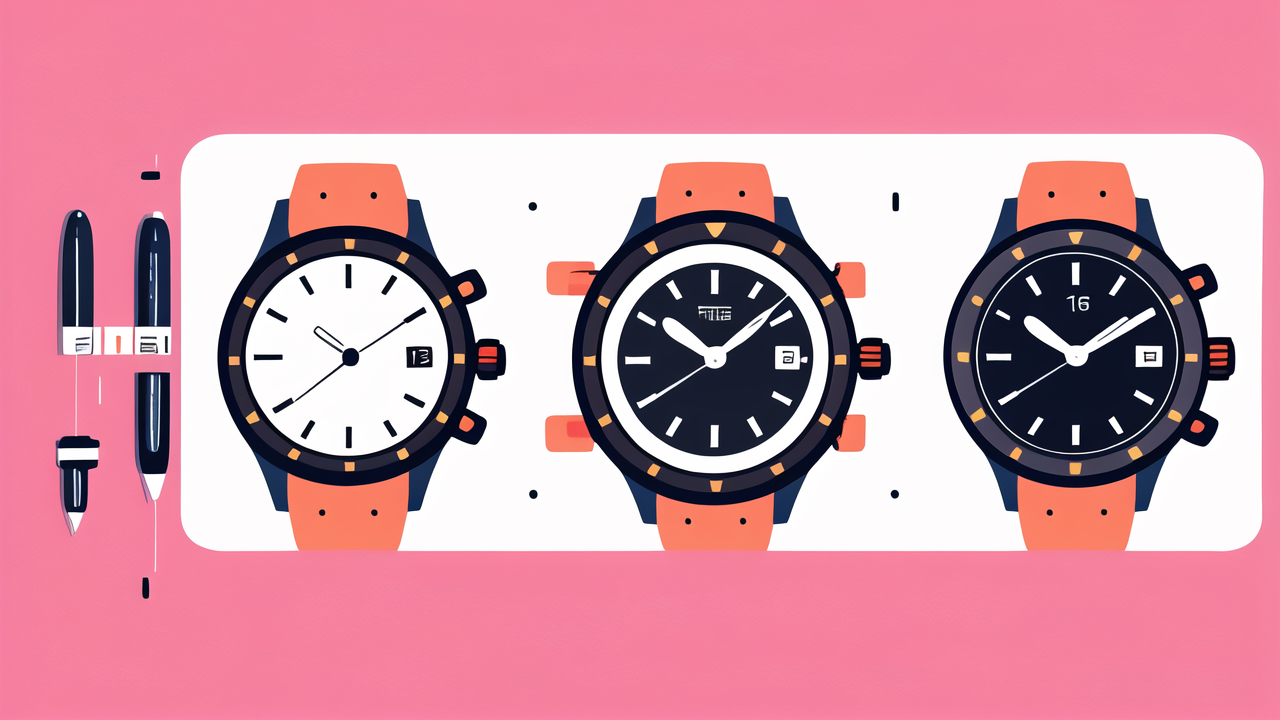The History of Watches as Fashion Statements and Technology Enables
The Origins of Watchmaking
Watchmaking began as a craft in the 16th century. Early watches were bulky and inaccurate. They were more of a status symbol than a timekeeping device. Wealthy nobles and merchants wore them as jewelry.

As technology improved, watches became smaller and more precise. By the 19th century, pocket watches were common among men. Women often wore pendant watches on chains around their necks.
The wristwatch emerged in the early 20th century. It gained popularity during World War I. Soldiers found them more practical than pocket watches in combat. After the war, wristwatches became fashionable for both men and women.
Milestones in Watchmaking Technology
The 20th century saw major advances in watch technology. In 1923, John Harwood invented the first self-winding watch. This eliminated the need for manual winding.
The quartz revolution began in 1969 with the Seiko Astron. It was the world's first quartz watch. Quartz watches were more accurate and cheaper to produce than mechanical ones.
Digital watches appeared in the 1970s. They used LED or LCD displays instead of hands. These watches could show more information, like the date and stopwatch functions.
In the 1980s, Casio introduced calculator watches. These were an early form of wearable technology. They combined timekeeping with basic computing functions.
The Impact of Digitalization on Traditional Watches
The rise of digital technology posed a challenge to traditional watchmaking. Many people switched to digital watches for their accuracy and features. Some predicted the end of mechanical watches.
However, mechanical watches didn't disappear. Instead, they became luxury items. Brands like Rolex and Omega marketed their watches as symbols of craftsmanship and status.
The Swiss watch industry adapted to the digital age. They began using computer-aided design and precision manufacturing. This allowed them to create more complex and accurate mechanical watches.
Some brands embraced technology while keeping traditional designs. For example, TAG Heuer created watches with both analog hands and digital displays.
The advent of smartwatches in the 2010s brought new challenges. Traditional watchmakers had to compete with tech giants like Apple and Samsung.
Wearable Technology Today: The Intersection of Fashion and Functionality
Modern Wearable Technology in the United States
Wearable tech has become a huge market in the US. Fitness trackers like Fitbit led the way. They showed people the value of tracking health data.

Smartwatches are now the most popular wearables. The Apple Watch dominates the market. It combines fitness tracking with smartphone features.
Other wearables include smart glasses and rings. These devices offer unique features for specific needs. For example, Oura rings focus on sleep tracking.
Many Americans use wearables daily. They track steps, monitor heart rate, and receive notifications. Some employers even offer wearables as part of wellness programs.
How Smartwatches are Changing the Game
Smartwatches have revolutionized the watch industry. They offer features that traditional watches can't match. Users can make calls, send texts, and use apps right from their wrists.
Health monitoring is a key feature of smartwatches. They can track heart rate, sleep patterns, and even detect falls. Some models can even take ECG readings.
Fitness enthusiasts love smartwatches for workout tracking. GPS-enabled watches can map runs and bike rides. They also provide real-time performance data.
Smartwatches are becoming more stylish. Many models offer customizable faces and bands. This allows users to match their watch to their outfit or mood.
Payment features are another game-changer. Users can pay for purchases with a tap of their wrist. This is especially convenient when exercising or running errands.
Wearable Tech Beyond the Wrist: Smart Accessories and Clothing
Wearable tech isn't limited to watches. Smart clothing is an emerging trend. These garments have sensors woven into the fabric.
Smart shoes can track running form and provide coaching tips. Some can even tighten themselves automatically.
Smart jewelry combines fashion with function. Rings and necklaces can track activity or send alerts.
Smart glasses are making a comeback. Unlike early models, new smart glasses look more like regular eyewear. They can display information or take photos discreetly.
Hearables are smart earbuds that do more than play music. They can translate languages in real-time or enhance hearing.
Some companies are developing smart tattoos. These temporary tattoos can control devices or display information on the skin.
The Future of Wearable Technology: Trends and Predictions
Innovations on the Horizon for Wearable Devices
Future wearables may be even more integrated with our bodies. Researchers are working on smart contact lenses. These could display information directly in our field of vision.

Brain-computer interfaces are another exciting area. These devices could allow direct control of devices with our thoughts.
Flexible displays may revolutionize wearable design. Imagine a bracelet that unfolds into a smartphone screen.
Energy harvesting could solve battery life issues. Future wearables might power themselves from body heat or movement.
Haptic feedback will likely improve. This could allow for more immersive experiences in virtual and augmented reality.
The Role of AI and Machine Learning in Wearable Tech
AI will make wearables smarter and more personalized. They'll learn our habits and preferences over time.
Machine learning could improve health predictions. Wearables might detect illnesses before symptoms appear.
AI assistants will become more advanced. They'll provide more natural and context-aware interactions.
Emotion recognition could be a game-changer. Wearables might adjust their behavior based on our mood.
AI could enhance security features. Devices might use behavioral patterns to verify identity.
Sustainable and Ethical Considerations in Wearable Production
Sustainability is becoming a key concern in wearable tech. Manufacturers are exploring eco-friendly materials and production methods.
Recyclability is a challenge due to the mix of materials in wearables. Some companies are developing modular designs for easier recycling.
Privacy concerns are growing as wearables collect more data. Stricter regulations may be needed to protect user information.
The ethical use of AI in wearables is another consideration. There are concerns about bias in algorithms and data interpretation.
Wearables raise questions about work-life balance. Always-on connectivity can lead to stress and burnout.
As wearables become more integrated with our lives, we'll need to address these issues. The future of wearable tech is exciting, but it comes with responsibilities.




Leave a comment
This site is protected by hCaptcha and the hCaptcha Privacy Policy and Terms of Service apply.